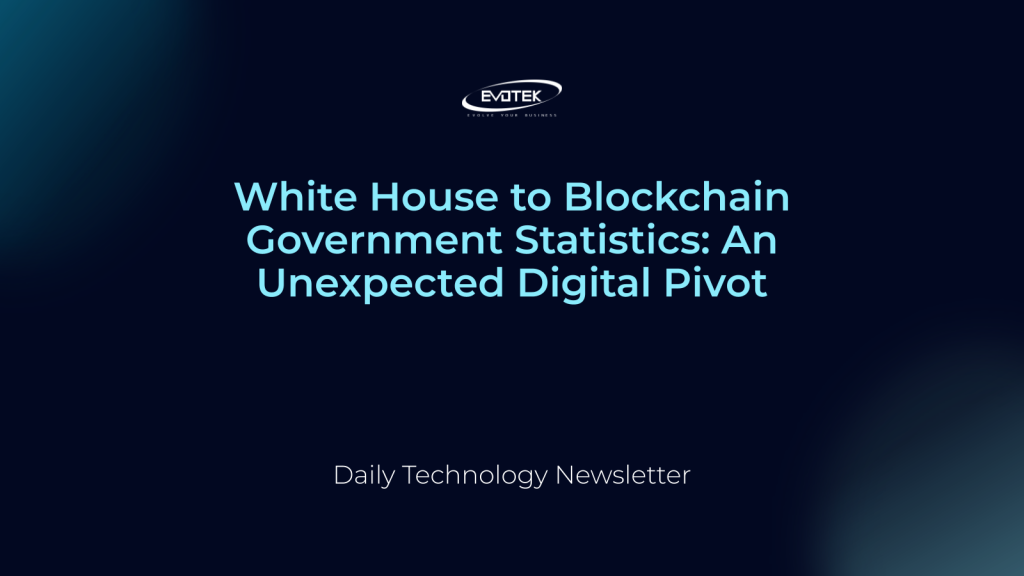Remember 2017? The year Bitcoin surged, and every company seemed to promise a revolutionary blockchain integration, often for reasons no clearer than the technology itself. It appears the White House is ready to relive that era, as the Trump administration announced plans to place official government statistics, including crucial economic data, onto the blockchain.
The revelation came during a marathon, televised cabinet meeting at the White House on Tuesday, spanning over three hours. Amidst what observers described as extensive praise for President Trump and the normalization of controversial language, Commerce Secretary Howard Lutnick made the surprising declaration.
"The Department of Commerce is going to start issuing its statistics on the blockchain because you are the crypto president, and we are going to put out GDP on the blockchain so people can use the blockchain for data distribution," Lutnick stated, addressing the President.
He continued, "And then we’re going to make that available to the entire government so all of you can do it. We’re just ironing out all the details so we can do it." Lutnick swiftly moved to another topic, leaving many to ponder the actual utility of such a move.
Blockchain’s Role: A Solution in Search of a Problem?
The core concept of blockchain technology revolves around a decentralized, immutable ledger. While this design is integral to the existence of cryptocurrencies like Bitcoin, its practical applications beyond this niche remain limited. Critics frequently point out that most information distribution needs are perfectly met by conventional databases or simple spreadsheets, which offer efficiency and established security without the added complexity of a blockchain.
The question arises: what specific problem would moving government statistics to a blockchain solve? The rationale, as suggested by Lutnick, seems rooted in an association with "crypto" rather than a clear technical advantage.
Political Undercurrents and Crypto Connections
This unusual digital strategy surfaces against a backdrop of President Trump’s past interactions with government data. Earlier this month, he notably fired Erika McEntarfer, head of the Bureau of Labor Statistics, after accusing her of producing "rigged" and "manipulated for political purposes" data when job growth figures were revised downwards.
Coincidentally, the Wall Street Journal reported on the same Tuesday that Trump’s social media platform, Truth Social, had just unveiled a new partnership with Crypto.com. This timing suggests a potential link between the administration’s growing embrace of crypto-related initiatives and the latest blockchain announcement. The Trump family has reportedly seen significant financial benefits from their various crypto associations, adding another layer to the discussion.
Beyond Statistics: A Meeting of Diverse Topics
The cabinet meeting also delved into other contentious areas, particularly President Trump’s plans to deploy the National Guard to "blue cities" across the country. Echoing previous statements, Trump remarked, "The line is that I’m a dictator, but I stop crime. So a lot of people say, ‘You know, if that’s the case, I’d rather have a dictator.’" He has repeatedly threatened to send federal troops to cities like Chicago under the pretext of combating crime, a move that has drawn widespread criticism.
As the administration navigates these diverse and often perplexing policy discussions, the decision to leverage blockchain for government data stands out as a move that has left many, including technology experts, scratching their heads. Perhaps, as crypto enthusiasts often suggest, blockchain is indeed the universal fix—maybe even for crime statistics?

 日本語
日本語 한국어
한국어 Tiếng Việt
Tiếng Việt 简体中文
简体中文